- Home
- Margaret Atwood
In Other Worlds
In Other Worlds Read online
By Margaret Atwood
FICTION
The Edible Woman
Surfacing
Lady Oracle
Dancing Girls
Life Before Man
Bodily Harm
Murder in the Dark
Bluebeard’s Egg
The Handmaid’s Tale
Cat’s Eye
Wilderness Tips
Good Bones
The Robber Bride
Alias Grace
The Blind Assassin
Good Bones and Simple Murders
Oryx and Crake
The Penelopiad
The Tent
Moral Disorder
The Year of the Flood
POETRY
Double Persephone
The Circle Game
The Animals in That Country
The Journals of Susanna Moodie
Procedures for Underground
Power Politics
You Are Happy
Selected Poems
Two-Headed Poems
True Stories
Interlunar
Selected Poems II: Poems Selected and New 1976–1986
Morning in the Burned House
The Door
NONFICTION
Survival: A Thematic Guide to Canadian Literature
Days of the Rebels 1815–1840
Second Words
Strange Things: The Malevolent North in Canadian Literature
Two Solicitudes: Conversations (with Victor-Lévy Beaulieu)
Negotiating with the Dead: A Writer on Writing
Moving Targets: Writing with Intent 1982–2004
Writing with Intent: Essays, Reviews, Personal Prose 1983–2005
Payback: Debt and the Shadow Side of Wealth
FOR CHILDREN
Up in the Tree
Anna’s Pet (with Joyce Barkhouse)
For the Birds
Princess Prunella and the Purple Peanut
Rude Ramsay and the Roaring Radishes
Bashful Bob and Doleful Dorinda
Copyright © 2011 by O.W. Toad Ltd.
All rights reserved. Published in the United States by Nan A. Talese / Doubleday, a division of Random House, Inc., New York.
www.nanatalese.com
DOUBLEDAY is a registered trademark of Random House, Inc. Nan A. Talese and the colophon are trademarks of Random House, Inc.
Simultaneously published in Canada by Signal, an imprint of McClelland & Stewart Ltd., Toronto.
Jacket design by Michael J. Windsor
Jacket photograph by Alex and Felix. www.alexandfelix.com
Library of Congress Cataloging-in-Publication Data
Atwood, Margaret, 1939–
In other worlds : SF and the human imagination / Margaret Atwood. — 1st U.S. ed.
p. cm.
1. Atwood, Margaret, 1939—Knowledge—Literature. 2. Atwood, Margaret, 1939—Knowledge—Science fiction. 3. Science fiction—History and criticism. 4. Science fiction—Authorship. I. Title.
PR9199.3.A8Z545 2011
813’.54—dc22 2011013776
eISBN: 978-0-385-53397-3
v3.1
For Ursula K. Le Guin
Contents
Cover
Other Books by This Author
Title Page
Copyright
Dedication
Introduction
In Other Worlds: SF and the Human Imagination
Flying Rabbits: Denizens of Distant Spaces
Burning Bushes: Why Heaven and Hell Went to Planet X
Dire Cartographies: The Roads to Ustopia
Other Deliberations
An Introductory Note
Woman on the Edge of Time by Marge Piercy
H. Rider Haggard’s She
The Queen of Quinkdom: The Birthday of the World and Other Stories by Ursula K. Le Guin
Arguing Against Ice Cream: Enough: Staying Human in an Engineered Age by Bill McKibben
George Orwell: Some Personal Connections
Ten Ways of Looking at The Island of Doctor Moreau by H. G. Wells
Never Let Me Go by Kazuo Ishiguro
After the Last Battle: Visa for Avalon by Bryher
Brave New World by Aldous Huxley
Of the Madness of Mad Scientists: Jonathan Swift’s Grand Academy
Five Tributes
An Introductory Note
Cryogenics: A Symposium
Cold-Blooded
Homelanding
Time Capsule Found on the Dead Planet
“The Peach Women of Aa’A” from The Blind Assassin
Appendices
An Open Letter from Margaret Atwood to the Judson Independent School District
Weird Tales Covers of the 1930s
Acknowledgements
Permissions Acknowledgements
About the Author
Introduction
I’m a fifty-three-year-old writer who can remember being a ten-year-old writer and who expects someday to be an eighty-year-old writer.
OCTAVIA BUTLER
Steel and Dotty (War in Mischiefland) by Margaret Atwood:
In Other Worlds is not a catalogue of science fiction, a grand theory about it, or a literary history of it. It is not a treatise, it is not definitive, it is not exhaustive, it is not canonical. It is not the work of a practising academic or an official guardian of a body of knowledge. Rather it is an exploration of my own lifelong relationship with a literary form, or forms, or subforms, both as reader and as writer.
I say “lifelong,” for among the first things I wrote as a child might well merit the initials SF. Like a great many children before and since, I was an inventor of other worlds. Mine were rudimentary, as such worlds are when you’re six or seven or eight, but they were emphatically not of this here-and-now Earth, which seems to be one of the salient features of SF. I wasn’t much interested in Dick and Jane: the creepily ultra-normal characters did not convince me. Saturn was more my speed, and other realms even more outlandish. Several-headed man-eating marine life seemed more likely to me, somehow, than Spot and Puff.
Our earliest loves, like revenants, have a way of coming back in other forms; or, to paraphrase Wordsworth, the child is mother to the woman. To date—as what I am pleased to think of as an adult—I have written three full-length fictions that nobody would ever class as sociological realism: The Handmaid’s Tale, Oryx and Crake, and The Year of the Flood. Are these books “science fiction”? I am often asked. Though sometimes I am not asked, but told: I am a silly nit or a snob or a genre traitor for dodging the term because these books are as much “science fiction” as Nineteen Eighty-Four is, whatever I might say. But is Nineteen Eighty-Four as much “science fiction” as The Martian Chronicles? I might reply. I would answer not, and therein lies the distinction.
Much depends on your nomenclatural allegiances, or else on your system of literary taxonomy. Back in 2008, I was talking to a much younger person about “science fiction.” I’d been asked by the magazine New Scientist to answer the question “Is science fiction going out of date?” But then I realized that I couldn’t make a stab at the answer because I didn’t really grasp what the term science fiction meant anymore. Is this term a corral with real fences that separate what is clearly “science fiction” from what is not, or is it merely a shelving aid, there to help workers in bookstores place the book in a semi-accurate or at least lucrative way? If you put skin-tight black or silver clothing on a book cover along with some jetlike flames and/or colourful planets, does that make the work “science fiction”? What about dragons and manticores, or backgrounds that contain volcanoes or atomic clouds, or plants with tentacles, or landscapes reminiscent of Hieronymus Bosch? Does there have
to be any actual science in such a book, or is the skin-tight clothing enough? These seemed to me to be open questions.
This much younger person—let’s call him Randy, which was in fact his name—did not have a hard and fast definition of “science fiction,” but he knew it when he saw it, kind of. As I told New Scientist, “For Randy—and I think he’s representative—sci-fi does include other planets, which may or may not have dragons on them. It includes the wildly paranormal—not your aunt table-tilting or things going creak, but shape-shifters and people with red eyeballs and no pupils, and Things taking over your body.” Here I myself would include such items as Body Snatchers—if of extraterrestrial rather than folkloric provenance—and Pod People, and heads growing out of your armpits, though I’d exclude common and garden-variety devils, and demonic possession, and also vampires and werewolves, which have literary ancestries and categories all their own.
As I reported in my New Scientist article, for Randy sci-fi includes, as a matter of course, spaceships, and Mad Scientists, and Experiments Gone Awfully Wrong. Plain ordinary horror doesn’t count—chainsaw murderers and such. Randy and I agreed that you might meet one of those walking along the street. It’s what you definitely would not meet walking along the street that makes the grade. Randy judged such books in part by the space-scapes and leathery or silvery outfits on their covers, which means that my speculations about jacket images are not entirely irrelevant. As one friend’s child put it: “Looks like milk, tastes like milk—it IS milk!” Thus: looks like science fiction, has the tastes of science fiction—it IS science fiction!
Or more or less. Or kind of. For covers can be misleading. The earliest mass-market paperbacks of my first two novels, The Edible Woman and Surfacing, had pink covers with gold scrollwork designs on them and oval frames with a man’s head and a woman’s head silhouetted inside, just like valentines. How many readers picked these books up, hoping to find a Harlequin Romance or reasonable facsimile, only to throw them down in tears because there are no weddings at the ends?
Then there was the case of the former Soviet Union. No sooner did the Wall come down in 1989 than pornography flooded across the one-time divide. Porn had hitherto been excluded in favour of endless editions of the classics and other supposed-to-be-good-for-you works, but forbidden fruit excites desire, and everyone had already read Tolstoy, a lot. Suddenly the publishers of serious literature were hard-pressed. Thus it was that The Robber Bride appeared in a number of Soviet-bloc countries with covers that might be described as—at best—deceptive and—at worst—as a Eurotrash slutfest in flagrante. How many men in raincoats purchased the Robber Bride edition sporting a black-satin-sheathed Zenia with colossal tits, hoping for a warm one-handed time in a back corner, only to heave it into the bin with a strangled Foiled Again! curse? For the Zenia in my book performs what we can only assume is her sexual witchery offstage.
Having thus misled readers twice—inadvertently—by dint of book covers and the genre categories implied by them, I would rather not do it again. I would like to have space creatures inside the books on offer at my word-wares booth, and I would if I could: they were, after all, my first childhood love. But, being unable to produce them, I don’t want to lead the reader on, thus generating a frantic search within the pages—Where are the Lizard Men of Xenor?—that can only end in disappointment.
My desire to explore my relationship with the SF world, or worlds, has a proximate cause. In 2009, I published The Year of the Flood, the second work of fiction in a series exploring another kind of “other world”—our own planet in a future. (I carefully say a future rather than the future because the future is an unknown: from the moment now, an infinite number of roads lead away to “the future,” each heading in a different direction.)
The Year of the Flood was reviewed, along with its sibling, Oryx and Crake, by one of the reigning monarchs of the SF and Fantasy forms, Ursula K. Le Guin. Her 2009 Guardian article began with a paragraph that has caused a certain amount of uproar in the skin-tight clothing and other-planetary communities—so much so that scarcely a question period goes by at my public readings without someone asking, usually in injured tones, why I have forsworn the term science fiction, as if I’ve sold my children to the salt mines.
Here are Le Guin’s uproar-causing sentences:
To my mind, The Handmaid’s Tale, Oryx and Crake and now The Year of the Flood all exemplify one of the things science fiction does, which is to extrapolate imaginatively from current trends and events to a near-future that’s half prediction, half satire. But Margaret Atwood doesn’t want any of her books to be called science fiction. In her recent, brilliant essay collection, Moving Targets, she says that everything that happens in her novels is possible and may even have already happened, so they can’t be science fiction, which is “fiction in which things happen that are not possible today.” This arbitrarily restrictive definition seems designed to protect her novels from being relegated to a genre still shunned by hidebound readers, reviewers and prize-awarders. She doesn’t want the literary bigots to shove her into the literary ghetto.
The motive imputed to me is not in fact my actual motive for requesting separate names. (If winning prizes were topmost on my list, and if writing such books would guarantee non-wins, my obvious move would be just to avoid writing them.) What I mean by “science fiction” is those books that descend from H. G. Wells’s The War of the Worlds, which treats of an invasion by tentacled, blood-sucking Martians shot to Earth in metal canisters—things that could not possibly happen—whereas, for me, “speculative fiction” means plots that descend from Jules Verne’s books about submarines and balloon travel and such—things that really could happen but just hadn’t completely happened when the authors wrote the books. I would place my own books in this second category: no Martians. Not because I don’t like Martians, I hasten to add: they just don’t fall within my skill set. Any seriously intended Martian by me would be a very clumsy Martian indeed.
In a public discussion with Ursula Le Guin in the fall of 2010, however, I found that what she means by “science fiction” is speculative fiction about things that really could happen, whereas things that really could not happen she classifies under “fantasy.” Thus, for her—as for me—dragons would belong in fantasy, as would, I suppose, the film Star Wars and most of the TV series Star Trek. Mary Shelley’s Frankenstein might squeeze into Le Guin’s “science fiction” because its author had grounds for believing that electricity actually might be able to reanimate dead flesh. And The War of the Worlds? Since people thought at the time that intelligent beings might live on Mars, and since space travel was believed to be possible in the imaginable future, this book might have to be filed under Le Guin’s “science fiction.” Or parts of it might. In short, what Le Guin means by “science fiction” is what I mean by “speculative fiction,” and what she means by “fantasy” would include some of what I mean by “science fiction.” So that clears it all up, more or less. When it comes to genres, the borders are increasingly undefended, and things slip back and forth across them with insouciance.
Bendiness of terminology, literary gene-swapping, and intergenre visiting has been going on in the SF world—loosely defined—for some time. For instance, in a 1989 essay called “Slipstream,” veteran SF author Bruce Sterling deplored the then-current state of science fiction and ticked off its writers and publishers for having turned it into a mere “category”—a “self-perpetuating commercial power-structure, which happens to be in possession of a traditional national territory: a portion of bookstore rack space.” A “category,” says Sterling, is distinct from a “genre,” which is “a spectrum of work united by an inner identity, a coherent aesthetic, a set of conceptual guidelines, an ideology if you will.”
Sterling defines his term slipstream—so named, I suppose, because it is seen as making use of the air currents created by science fiction proper—in this way:
… I want to describe what seems to me to be a new, em
ergent “genre,” which has not yet become a “category.” This genre is not “category” SF; it is not even “genre” SF. Instead, it is a contemporary kind of writing which has set its face against consensus reality. It is fantastic, surreal sometimes, speculative on occasion, but not rigorously so. It does not aim to provoke a “sense of wonder” or to systematically extrapolate in the manner of classic science fiction. Instead, this is a kind of writing which simply makes you feel very strange; the way that living in the late twentieth century makes you feel, if you are a person of a certain sensibility.
His proposed list of slipstream fictions covers an astonishing amount of ground, with works by a wide assortment of people, many of them considered to be “serious” authors—from Kathy Acker and Martin Amis to Salman Rushdie, José Saramago, and Kurt Vonnegut. What they have in common is that the kinds of events they recount are unlikely to have actually taken place. In an earlier era, these “slipstream” books might all have been filed under the heading of “traveller’s yarn”—stories like, for example, Herodotus’s accounts of monopods and giant ants or medieval legends about unicorns, dragons, and mermaids. Later they might have turned up in other collections of the marvellous and uncanny, such as Des Knaben Wunderhorn, or—even later—the kind of You-won’t-believe-this-hair-raiser to be found in assortments by M. R. James or H. P. Lovecraft or—occasionally—R. L. Stevenson.

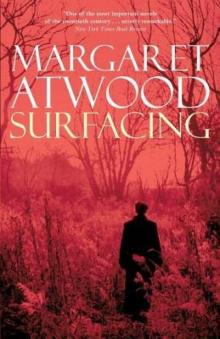 Surfacing
Surfacing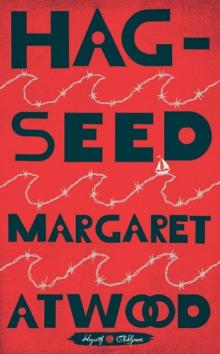 Hag-Seed
Hag-Seed Oryx and Crake
Oryx and Crake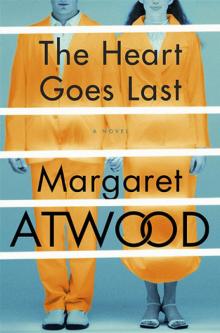 The Heart Goes Last
The Heart Goes Last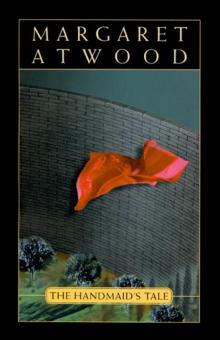 The Handmaid's Tale
The Handmaid's Tale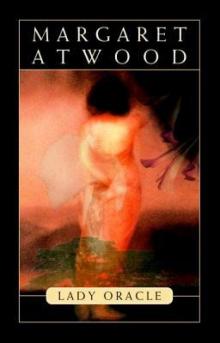 Lady Oracle
Lady Oracle Good Bones and Simple Murders
Good Bones and Simple Murders The Robber Bride
The Robber Bride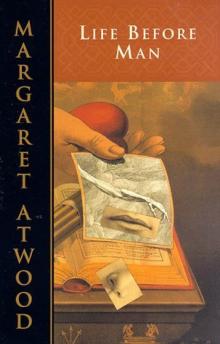 Life Before Man
Life Before Man Alias Grace
Alias Grace The Blind Assassin
The Blind Assassin Cat's Eye
Cat's Eye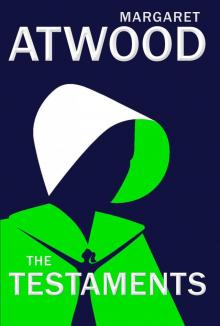 The Testaments
The Testaments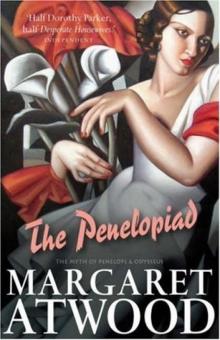 The Penelopiad
The Penelopiad MaddAddam
MaddAddam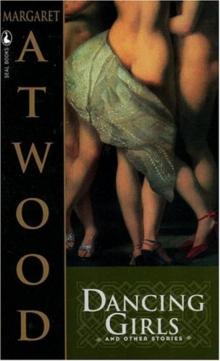 Dancing Girls & Other Stories
Dancing Girls & Other Stories On Writers and Writing
On Writers and Writing Selected Poems II (1976-1986)
Selected Poems II (1976-1986) Wilderness Tips
Wilderness Tips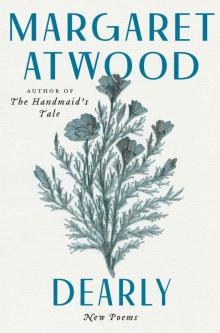 Dearly
Dearly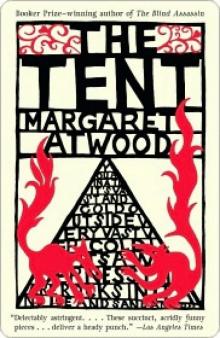 The Tent
The Tent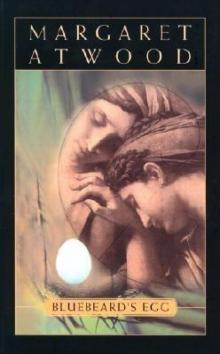 Bluebeard's Egg
Bluebeard's Egg The Edible Woman
The Edible Woman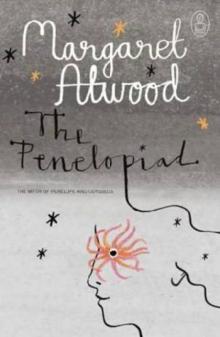 The Penelopiad: The Myth of Penelope and Odysseus
The Penelopiad: The Myth of Penelope and Odysseus Good Bones
Good Bones I Dream of Zenia with the Bright Red Teeth
I Dream of Zenia with the Bright Red Teeth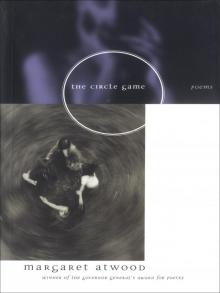 Circle Game
Circle Game Choke Collar: Positron, Episode Two
Choke Collar: Positron, Episode Two Stone Mattress: Nine Tales
Stone Mattress: Nine Tales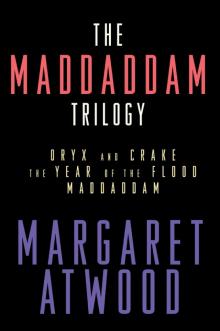 The MaddAddam Trilogy
The MaddAddam Trilogy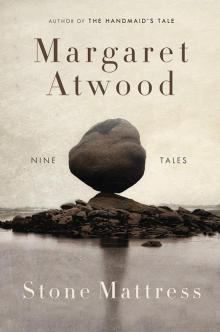 Stone Mattress
Stone Mattress Power Politics
Power Politics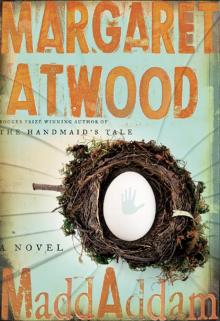 MaddAddam 03 - MaddAddam
MaddAddam 03 - MaddAddam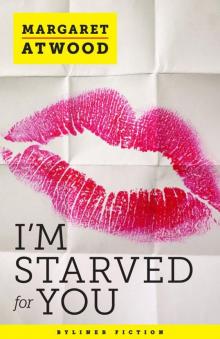 I’m Starved for You (Kindle Single)
I’m Starved for You (Kindle Single) Murder in the Dark
Murder in the Dark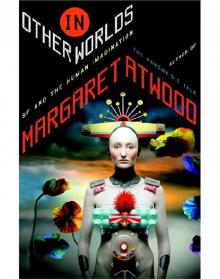 In Other Worlds
In Other Worlds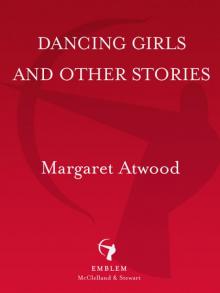 Dancing Girls
Dancing Girls Moral Disorder
Moral Disorder